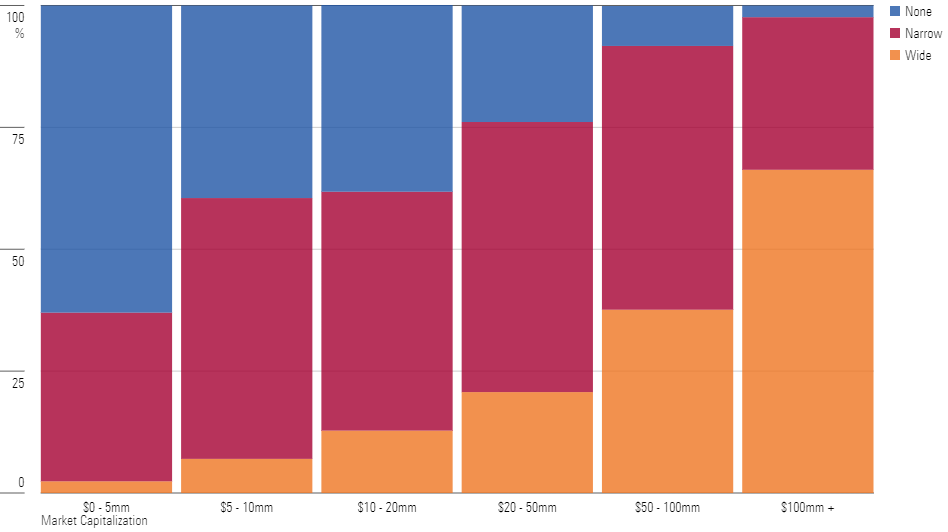5 Investing Rules I Break in My Portfolio
Don’t let perfect investing be the enemy of good.

It’s probably no surprise that, as a longtime equity analyst, I’m also a longtime equity investor. But despite my experience, I’m far from perfect. I’ve made my fair share of investing mistakes, some of which are admittedly ongoing.
In that vein—and following in the footsteps of my colleagues Christine Benz and Amy Arnott—I thought it may be helpful to outline the investing rules I most frequently break. The goal is not merely self-flagellation. Instead, it’s hopefully a reminder that perfect need not be the enemy of good enough. Despite the challenge of following every recommendation to the letter, starting along the investment journey with the goal of ongoing learning and improvement is often the best strategy for long-term success.
With that in mind, here are five common investing sins I’m guilty of committing:
I’m (probably) too heavily invested in equities.
My investment portfolio consists of both my 401(k) retirement savings and a separate taxable account that is focused solely on individual stocks. I use Morningstar’s retirement management services for the allocations in my 401(k) retirement account—a nice perk for employees—but I have full control of the taxable equity portfolio.
Putting these together, my invested capital skews 82% equity and 18% fixed income—far from a common 60/40 portfolio or from rules of thumb such as allocating 100 minus your age to equities (although, as much as it pains me to admit, the balance is closer to the modernized 120 minus your age).
Given that my 401(k) balance alone is already skewed 70% to stocks, doubling down in my taxable account by focusing only on individual stocks is arguably adding too much risk—especially at a time when bonds are looking increasingly attractive.
I have a home bias in my stock portfolio and could stand to explore emerging markets.
Roughly 70% of the equity portion of my combined trading account and retirement portfolios is in North American stock. This home bias is even more pronounced in my direct-equity taxable account, where 15 of the 16 stocks I own are traded primarily on U.S. exchanges.
Meanwhile, 25% of my total portfolio is invested in other developed markets like the United Kingdom, Europe, and Japan. (As an aside, despite leading Morningstar’s equity research team in Australia for nearly five years, my former Sydney colleagues may be disappointed to learn I don’t directly own any Australia-listed securities in my self-guided trading account. Sorry, mates!)
This leaves just 5% invested in emerging-markets equities, trailing the global market-cap weighting of 8%. While some of the companies in my portfolio are undoubtedly tied to the fortunes of geographies like Asia or Latin America, it may be worth considering some direct investment in developing-markets stocks.
I have too much individual equity concentration within my trading account.
My taxable equity portfolio consists of just 16 individual stocks, below the typical risk-reducing guideline, which recommends holding at least 20 single names. This effect is less relevant when considering all my investments, including the mutual funds in my 401(k), but arguably an increase in diversification may be appropriate.
Of course, too much diversification could drive my portfolio’s returns to be much closer to an underlying index, muting the effect of my convictions. I want each stock to have a meaningful contribution to the portfolio’s performance when I think there’s a sizable margin of safety in a name that could generate solid risk-adjusted returns. Admittedly, 16 stocks may still be too few, as my colleagues wrote in 2017, but the sweet spot doesn’t appear to be many more—just 20–30 stocks.
I’m overweight large-cap stocks (but perhaps with good reason).
The Morningstar US Market Index is weighted 73% to large-cap stocks, which is to be expected given market-cap-weighted construction rules. But my individual trading portfolio goes even further, with 83% weighted to the largest companies.
My Individual Equity Account Tilts Toward Large Caps

This overweighting could again be seen as an undue increase of risk. However, it’s also a product of my personal investing style. I generally tend to invest in companies with durable competitive advantages—an “economic moat” in Morningstar parlance—and each stock in my taxable account has been assigned a narrow or wide Morningstar Economic Moat Rating (or had been assigned this rating, if no longer covered). As the chart below shows, there is a strong propensity for larger-cap companies in the United States to also have a narrow- or wide-moat rating.
Larger U.S. Stocks Are More Likely to Be Assigned an Economic Moat

Now, this doesn’t mean that being large directly leads to durable competitive advantages. If anything, the causation may flow in the opposite direction—large-cap stocks may have built their heft by holding competitors at bay over long periods. But nonetheless, building a portfolio of individual U.S. stocks focused on moats—particularly wide moats—often means concentrating on large-cap names.
I rarely sell shares, and my tax strategy is nonexistent.
Staying invested is important—my recent research shows that trying to time the market is generally not a profitable endeavor versus a steady buy-and-hold strategy over the very long term. But sometimes, stocks get expensive, and it may be worth selling to make room for other, more-attractive ideas.
While I generally aim to hold securities for very long periods—I’ve owned Berkshire Hathaway BRK.B since 2009, for instance—I’ve been guilty of overstaying my welcome as a shareholder. My most recent mistake is Merck & Co. MRK. The stock’s price now sits close to its estimated fair value, but in hindsight, I could have avoided quite a bit of recent pain if I had sold when the name screened as more than nearly 20% overvalued in early 2023.
Beyond not selling when prices are high, I also rarely take advantage of tax-loss harvesting to shed myself of underperforming stocks. In fact, my investing account tax strategy—if you could even call it that—has bordered on negligent. I haven’t seriously investigated tax-advantaged vehicles like municipal bonds or pursued tax-avoidance strategies like backdoor Roth IRA conversions. I suppose in some small way I can take solace from contributing more than my fair share to the U.S. budget, but this is clearly a focus for this year and beyond.
Final Thoughts
Despite these many faults, my investments have generally performed in line with my expectations and risk tolerance. I feel lucky to have been able to take advantage of opportunities presented to me and don’t take anything for granted.
But in the spirit of continuous improvement, it’s helpful to see my list of broken rules. Some are acceptable—for instance, tilting toward large-cap stocks because of my preference to invest in moaty companies. On the other hand, some are products of inertia, knowledge gaps, or simply a lack of time. Regardless, the above list has me already thinking about 2024 New Year’s resolutions, with the hope of building even greater success. I hope you’ll find it useful, too.
The author or authors own shares in one or more securities mentioned in this article. Find out about Morningstar’s editorial policies.

/s3.amazonaws.com/arc-authors/morningstar/35091ad9-8fe9-4231-9701-578ec44b5def.jpg)
/cloudfront-us-east-1.images.arcpublishing.com/morningstar/RNODFET5RVBMBKRZTQFUBVXUEU.jpg)
/cloudfront-us-east-1.images.arcpublishing.com/morningstar/LJHOT24AYJCHBNGUQ67KUYGHEE.jpg)
/cloudfront-us-east-1.images.arcpublishing.com/morningstar/V33GR4AWKNF5XACS3HZ356QWCM.jpg)
:quality(80)/s3.amazonaws.com/arc-authors/morningstar/35091ad9-8fe9-4231-9701-578ec44b5def.jpg)